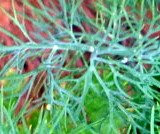
Free Animated Images
In March 2008, the ground was broken for the Butterfly Garden at the Monroe Academy Preschool.
The goal was to create an outdoor classroom. We thought it would be wonderful for the children to be able to have some hands on involvement in the project. Eventually, we hope that this project will provide the children with a beautiful outdoor classroom.
I am posting a couple of websites that provide information about Outdoor Classrooms.
The Alabama Wildlife Federation has a very helpful website:
http://www.alabamawildlife.org/stewardship/faqs_oc_program.asp
http://www.alabamawildlife.org/pdf/FAQsheet.pdf
http://www.alabamawildlife.org/stewardship/faqs_oc_program.asp
http://www.alabamawildlife.org/pdf/FAQsheet.pdf
The following is from the website:
What is an Outdoor Classroom?
An outdoor classroom site is an outdoor area (or areas) on the school grounds that provides hands-on, outdoor learning opportunities and allows students of all ages to utilize multiple-disciplinary skills including math, science, history, geography, and the language arts in a fun and exciting environment.
An outdoor classroom site is designed to attract wildlife by providing elements crucial to wildlife survival including food, water, cover from predators, and places to raise young.
Outdoor classrooms can include raised bed gardens, vegetable gardens, herb gardens, butterfly gardens, wildflower meadows, theme gardens, forest communities, aquatic studies areas, ponds, bog gardens, courtyards, nature trails, animal tracking boxes, weather stations, and a variety of other components that provide hands-on learning opportunities for students.
One goal is for our school to become a member of the Alabama Wildlife Federation. Membership would supply our school with useful information and opportunities.
Update- We are sending the application to the Alabama Wildlife Federation next week. So, we should have the resources they provide members very soon!
Another great website is: http://www.kidsgardening.com/
There is information regarding grants for schools. We applied for one grant in March 2008; however, we were not chosen as a recipient. Luckily, our current headmaster has been extremely supportive of this endeavor.
After the ground was broken, we prepared the soil and planted the nectar and host plants. We received some plants and mulch from our neighbor, Mockingbird Nursery. The other plants were donated by parents. We did our best to find plants that would attract butterflies and that were appropriate for our area. We also planted mostly perennials which will come back every year.
To see the plants that we planted, scroll down the page to view the document "Flowers in our garden." This document will be updated as new plants are added. It is also a source where the success or failure of the plants can be recorded

Then the fun part! The children in the K-4 classes had been growing seedlings inside for weeks. Each child was able to plant some of these seedlings in the garden.
placement of plants in March 2008
The students helped by watering the garden. We watched the garden grow, but we did not have butterflies right away. Unfortunately, it took some time for the butterflies to find the plants. We had Fennel, Dill and Parsley planted to attract Black Swallowtail Butterflies.
Here is a link to a site that shows the butterflies that have been sighted in Monroe County: http://www.butterfliesandmoths.org/map?dc=5676&_dcc=1&si=1
We did have some setbacks during the summer. There was more rainfall than usual, and there is a downspout off the building that floods the area. That coupled with some accidental over watering and four inches of cypress mulch caused havoc on the drought hardy varieties that were planted. In late August, we diverted the downspout and monitored the watering. Luckily, many of the plants revived.
In June and August, we had black swallowtail caterpillars on the Host plants.
http://en.wikipedia.org/wiki/File:Black_Swallowtail_Papilio_polyxenes_1700px.jpg
The Black Swallowtail Caterpillar is black yellow and white, but it starts out as an egg that is very small. These photos show some of the transition from egg to caterpillar.
The first photo shows the eggs- they are very small and yellowish in color. The second photo shows an immature caterpillar- they are black with a light ring around the middle. The third photo shows a mature caterpillar.



The caterpillars that we had in August did not make it- in all likelihood due to pesticides that were used in the area to control ants. In the future, there needs to be a sign to inform anyone spraying to avoid the vicinity of the garden.
Here are more pictures of the garden- note that the zinnias which were planted by the students - were the prettiest and brightest flowers in the garden- and at times there would be ten butterflies in the garden at one time.
Notice the orange butterflies on the flowers.
This butterfly is brown and orange,
Click on the link 'M A Butterfly Garden: Flowers in our garden' to see details of the plants used in the garden.
Microsoft Word - Flowers in Our Butterfly Garden
">

Free Animated Images">




















No comments:
Post a Comment